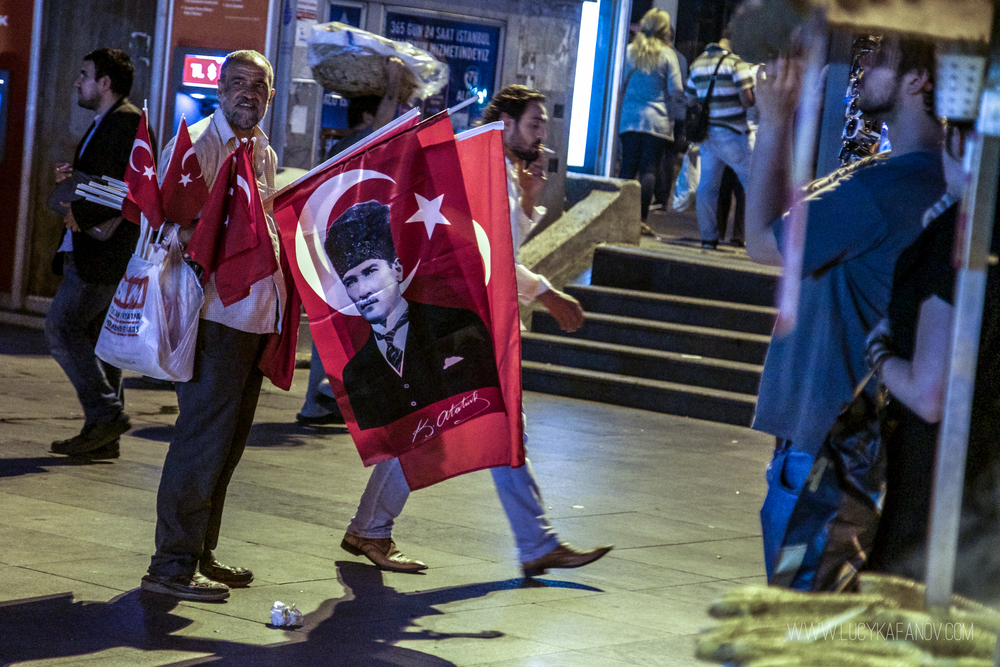I moved to Istanbul at the start of September with the mistaken impression that I had 180 days of valid-visa bliss before I needed to start worrying about residency. I was wrong. The tourist visa is good for 180 days, but you’re only allowed 90 total within the country. All of the sudden, I found myself thrust into the confusing world of Turkish bureaucracy in a mad-dash to get my residency permit before time ran out.
The first thing I can tell you about the process is that there will be tears. A lot of tears. Tears of frustration, tears of anger, tears of confusion, and occasionally, gratitude.
The problem is that Turkey changed the residency rules back in April. The result is a flood of contradictory and often confusing advice. Local officials were often not caught up on the changes, various friends who had gone through the process before April offered advice that no longer applied, Google wasn’t of much help. While I have yet to get the actual residency permit, I’ve gone through many of the steps and will post instructions based on my personal experience. Perhaps there will be fewer tears when you go through it.
THE BASICS:
To get a residency permit in Turkey, you need the following:
Notarized rental contract (KİRA SÖZLEŞMESİ) in your name
Turkish Tax ID number (VERGİ KİMLİK NUMARASI)
Health insurance (Sağlığı Sigortası) through a local Turkish company
A Turkish bank account with at least $6,000 USD
RENTAL AGREEMENT:
Whether you’re renting through a real estate agent (emlak) or subletting from someone you happen to know, you absolutely will need an official lease in your name. You will also need to get this document notarized, which should cost about 120 TL. One important thing to note: if your lease agreement mentions any sort of security deposit or advance payment, the notary will charge you a percentage of whatever the contract states. In my case, the emlak simply drafted another contract where he removed any mention of money. I took that contract to the notary along with my passport and walked away 15 minutes later with my notarized lease. Simple enough. The notary isn’t likely to speak English, but you should be able to manage without anyone translating.
Recommendations:
EMLAK / REAL ESTATE AGENT: Alican Akgüç 0 (212)-2524115 or 0 (533) 450-7168
Alican speaks English and his office in Chihangir. You can find the address by clicking here. Like most emlaks, his fee is the equivalent of one month's rent.
NOTARY PUBLIC: Beyoğlu 33. Noter Kuloğlu Mh., 34433 Beyoğlu/İstanbul, Turkey
Located right near the Carrefour supermarket, they don't speak English but got the job done.
TAX NUMBER:
In order to open a Turkish bank account or sign up for health insurance, you need to first obtain a Turkish tax ID number, or Vergi Kimlik Numarası. The process is free and relatively easy once you know what you’re doing. You’ll need:
Beyoglu Tax Office at Meşrutiyet Caddesi No:125
notarized rental agreement
passport
photocopy of your passport
Head down to your local tax office, or Vergi Dairesi. I live in Beyoglu, so mine was located at Meşrutiyet Caddesi No:125, by the Şişhane metro. Once you walk past the metal security gate, you'll see a huge room with lots of counters and lines. You want the second counter on your left.
For the tax ID number, head to the counter on the left, where all the dudes are gathered.
The person at the counter may not speak English, but show them your lease and passport and ask for “tax number” and they should understand. They'll give you a form to fill out where you''' have to write your local address and Turkish cell phone number. After clicking away on the computer for a bit, the counter person will hand you a printout that has your tax number (next to the letters TCKN/VKN) as well as a piece of paper that you have to take upstairs to the “manager” for a signature. I went upstairs, where there was another enormous room with counters. When you walk in, look right and you’ll see an office for some sort of Very Important Person. That’s where the manager sits. Just shuffle in, smiling apologetically and hand her your papers. The manager will sign the slip and then you’re off on your merry way.
Don’t lose that paper.
HEALTH INSURANCE:
No matter what you are told, your foreign health insurance will not be sufficient for obtaining a Turkish residency permit. You need to get one through a local Turkish company. I had a great experience working with a stellar English-speaking health insurance agent who came highly recommended by several expat friends. The insurance came out to 820 TL for the year.
You’ll need:
Lot to pay for the health insurance.
Passport
Notarized Rental Contract
Turkish Tax ID number
820 TL in cash
You go to the office and the agent fills out all of the paperwork for you. Then she hands you a booklet and a slip of paper and sends you donwstairs to the bank. There’s a little ticket machine that will give you a number indicating your turn -- a local guard helped me figure out what services I needed as everything was in Turkish. At the counter, you give the clerk your papers and passport, along with the 820 TL. You'll receive a slip of paper in return. Head back up to the agent, hand her the slip, shake hands, and you’re done.
BANK ACCOUNT:
This part was absolute hell. I decided to go with HSBC bank since it’s international and blah blah. I proudly marched in with my notarized lease, Tax ID number and passport and ask to open a new account. Almost no one spoke English at the Istiklal street branch I happened to go to, so it took a while and a lot of gesturing to explain what I was there to do. We finally found an agent who was able to communicate with me. The woman takes a look at my documents and tells me that it’s not enough. The conversation went something like this:
Woman: “You need a residency permit to open a bank account with HSBC.”
Me: “But the Turkish government won’t issue a residency permit unless I have a Turkish bank account.”
“Yes, but we need to your residency permit in order to open an account.”
“But I need a bank account in order to get the residency permit.”
“These are our new rules, I’m sorry.”
“Do they make sense to you?”
“No.”
“Okay.”
I gather my papers storm across the street to Garanti bank. The wait to see a teller is 20 minutes. Once I show her my paperwork, another problem. The bank system won’t let her open a new account. I’ll have to come back the next day. The following day, I head to Garanti bank in Chihangir. After a 30 minute wait to see the teller, the woman looks through my paperwork and tells me she can't open a new account unless I have a foreigner ID number. She tells me I can obtain this at the police station. Confused, I leave.
After some googling and consultation with friends, I realize that the foreigner ID number she was talking about was precisely what the residency permit is for. And no, you can't get it at the police station. Frustrated, I call Garanti bank's English-language hotline. I learn that there are only a few branches that are "authorized" to open new accounts for foreigners with just the Tax ID number and notarized lease. One such branch is in Taksim Square. I head there next and after about two hours, much confusion, and a few tears, I have a Turkish bank account.
RESIDENCY APPOINTMENT:
This might be the hardest step and one that I have yet to go through. You basically have to wake up at 7 am each morning and head to http://e-randevu.iem.gov.tr/yabancilar/dil_sec.aspx, in hopes of being able to sign up for an appointment before all the slots are filled. Once I do so, I'll update the blog.
Good luck!























